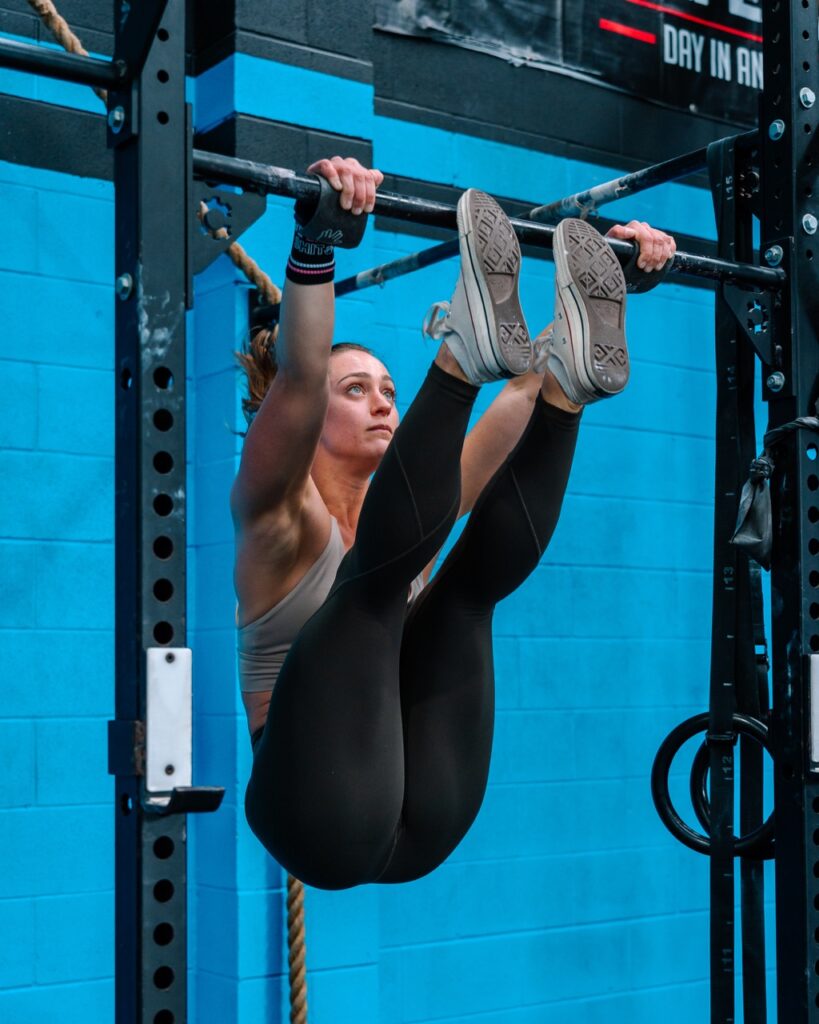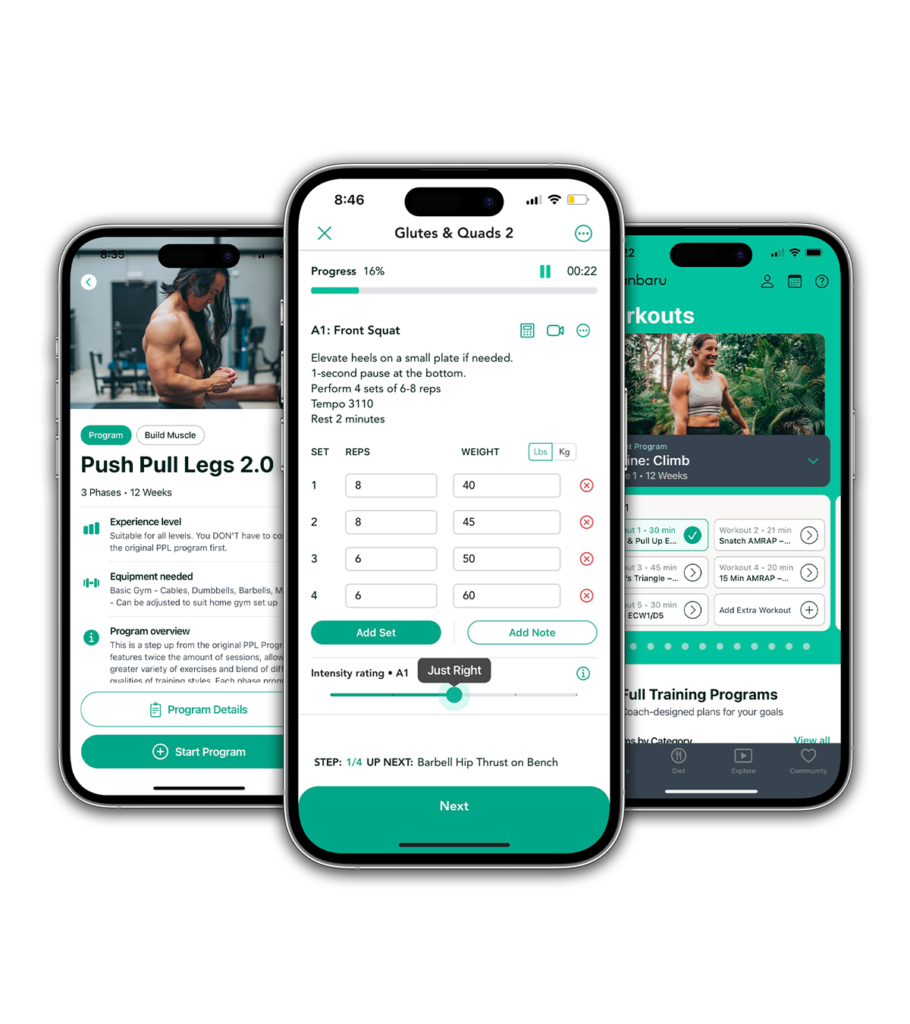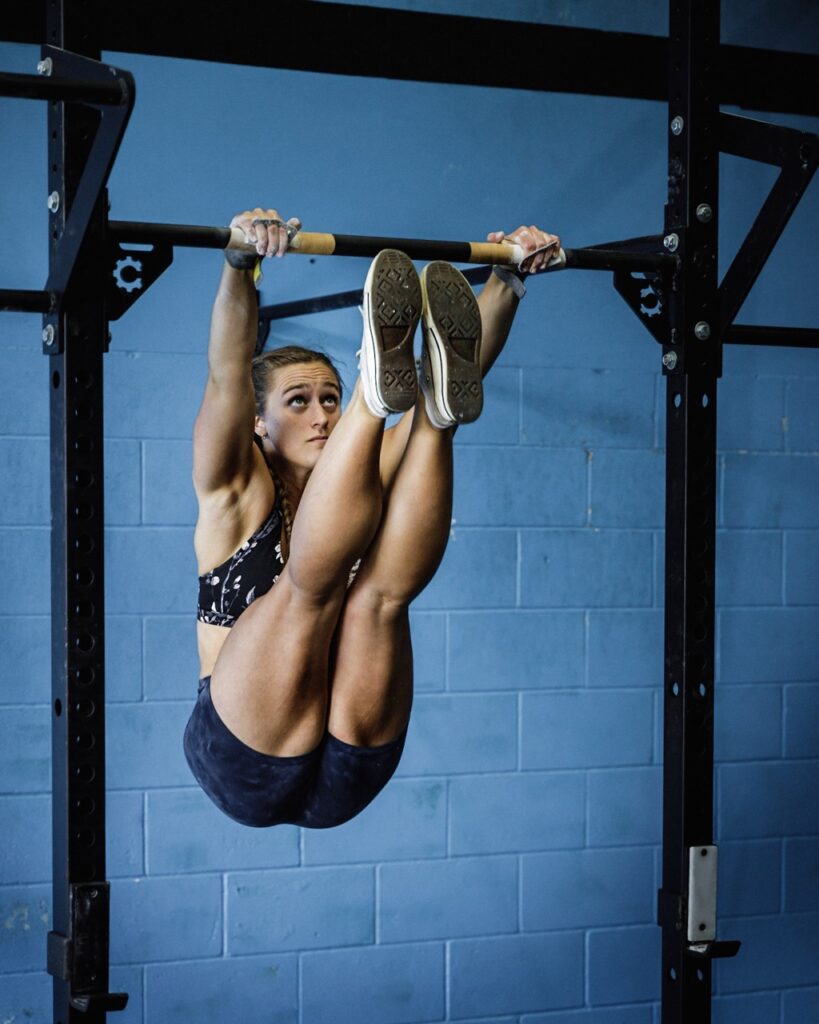
There are only a few key things to master when it comes to the kipping toes to bar:
- Shapes
- Timing
- Strength
You’ll find other articles on both ab strength and straight arm pulling strength on Ganbaru, but this one is all about the timing component. Timing makes kipping difficult – it’s not obvious for most people!
I’m a big fan of providing external feedback to force the timing issue in multiple ways, so I’ve developed a system of timing drills that hopefully end up working for everyone when learning their TTB.
Dead stop kipping variations
I love the dead stop kipping variations because they force an athlete to return quickly to the arch position. One of the most common faults in a kipping toes to bar is a lazy, slow return to the arch, and this messes up the kipping dynamic entirely. Dead stop variations require you to get back to position even faster than on the bar, and the arch must be tight and aggressive or the athlete will get thrown around as their heels hit the box.
We have 4 variations of this in our toes to bar program:
- Dead Stop Knee to Chest
- Dead Stop Knee To Elbow
- Dead Stop Single Leg TTB
- Dead Stop TTB
Where do I start?
Set the box up roughly 5-10cm in front of the bar you’re hanging from (it’s important that it’s slightly in front or the timing will suck). With your heels on the box, squeeze your glutes and keep a long body to form something similar to your arch position on the bar. It won’t feel exactly the same, but it’s close enough.
With an aggressive pull back on the bar (elbows straight), swing your body back into a compressed position. Here you will either do a knees to chest, knees to elbow, or a single or double leg toes to bar. Return quickly to the arch position without any juddering against the box.
Watch out for these mistakes:
- Bending the knees on the return to arch to “buy time” instead of driving the heels to the box
- Failing to push down into the bar with enough force
- Bending the arms
Jumping variations
Jumping variations, in my view, have less utility than the dead stop variations above. However, they are still very good for exposing an inability to move quickly into and out of position, so they can be helpful for some athletes who are struggling with the dead stop skills.
We have 3 variations of this in our toes to bar program:
- Jumping Knee to Chest
- Jumping Knee to Elbow
- Jumping Toe To Bar
What is it?
Just like your dead stop drills, you will need to quickly find the end position of your TTB variation, then return to the power position so you can reform the arch. The floor is a bit more forgiving for this, but the timing is still very fast – faster in fact than with an actual kipping toes to bar.
Set yourself on a bar that you can reach with your feet on the floor with a little bit of space to push your chest through to an arch position. You can stack plates or boxes up if you need more height.
Technique
Keeping a tight body, swing through to a small arch, then as you move back out of the arch, aggressively jump up to the end position (i.e. knees to chest, knees to elbow, or toes to bar) then return to the floor before your body swings to the other side. You should be able to return the feet to the floor, then pass back to the arch as you’d normally see in a toes to bar.
Kipping timing drills
There are 4 specific timing related drills in this program:
- Single Leg TTB w Half Box Support
- Kipping Knee to Elbow
- Single Leg TTB
- Toes to rings
Talk me through it, coach
Each of these forces something slightly different.
The half box support variation is the friendliest, as it allows you to determine your positions and regulate your timing. As you improve, you can reduce the amount of weight you put through the foot to allow you to do more work with the swing and the upper body.
The knee to elbow forces a relatively big straight arm pull on the bar and requires a good deal of compression as well. It is my favourite scaling option for the toes to bar.
The single leg toes to bar keeps the timing of the toes to bar very similar, but is less physically difficult to achieve.
The toes to rings helps with shapes more than timing for those struggling with compression.
Technique
These movements are all fairly self explanatory if you’ve been working through your toes to bar progressions. Watch the videos and make sure you’re using tight body lines, straight elbows and aggressive arch positions.
Direct scaling options for the toes to bar
If you’ve got the components of the toes to bar right, but haven’t quite got the movement yet, these are my favourite ways to regress the toes to bar.
- TTB Half TTB
- Toes to Target
- Toes to bar
What is it?
The TTB + half TTB allows you to feel the moment of contact and figure out just how hard you need to compress to reach the bar. I do not recommend this scaling option if you struggle to get your hips behind the bar. We want each rep to be rhythmic.
The toes to target is simply doing the same movement as the toes to bar with as much height as you’re currently able to achieve. Keep squeezing the gap closer and closer to the bar each week so you eventually tap the bar!

Ready to workout?
Follow proven programs written by expert coaches, delivered in an easy-to-use app built by lifters, for lifters.
Related Posts
How Ganbaru Method helped Anna transform her body & life
Anna, 30, is a tech sales professional who changed her physique by gaining muscle and losing fat with Ganbaru Method.
View more How Ganbaru Method helped Anna transform her body & life
This Ganbaru CrossFit program got a new dad back in the best shape of his life
Petr, 34, is an executive chef, husband, and father of a toddler. This is how he got his fitness back on track.
View more This Ganbaru CrossFit program got a new dad back in the best shape of his life
How Ganbaru Method helped Corey with successful bodybuilding results
Corey, 33, used Ganbaru Method to place in bodybuilding shows, achieve the splits, and transform his confidence with his health.
View more How Ganbaru Method helped Corey with successful bodybuilding results





